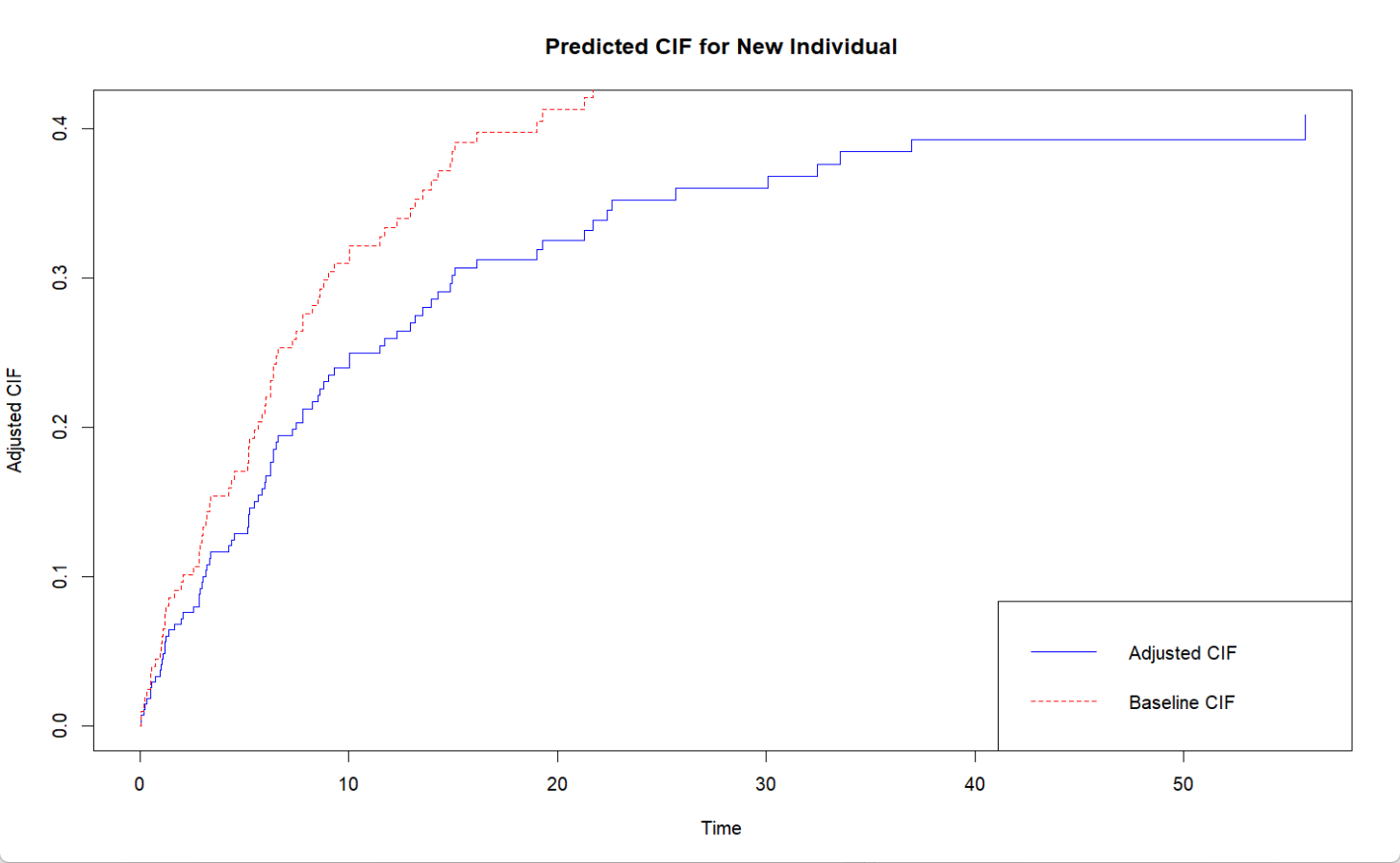从0开始学习R语言--Day58--竞争风险模型
在用传统生存分析方法的场景中(如Kaplan-Meier和Cox回归),假设所有事件都是独立且互斥的,但在现实中,研究对象可能面临多种互斥的终点事件(如癌症患者可能死于癌症本身,也可能死于其他原因),如果直接去分析,模型会把这种结局时间错误地纳入评估,从而提高了病症的分析。
而竞争风险模型可以在考虑其他竞争风险存在的情况下,排除干扰求得某特定事件发生的概率。
以下是一个例子:
library(cmprsk)library(survival)# 生成模拟数据set.seed(123)n <- 200data <- data.frame( age = rnorm(n, 60, 10), sex = factor(sample(c(\"Male\", \"Female\"), n, replace = TRUE)), treatment = factor(sample(c(\"A\", \"B\"), n, replace = TRUE)), time = rexp(n, 0.1), status = sample(0:2, n, replace = TRUE, prob = c(0.2, 0.4, 0.4)) # 0=删失, 1=主要事件, 2=竞争事件)# 准备设计矩阵cov_matrix <- model.matrix(~ age + sex + treatment, data = data)[, -1]# 拟合Fine-Gray模型fg_model <- crr( ftime = data$time, fstatus = data$status, cov1 = cov_matrix, failcode = 1, # 目标事件(如癌症死亡) cencode = 0 # 删失编码 )# 提取基线累积风险(需要手动计算)times <- sort(unique(data$time[data$status == 1])) # 目标事件发生时间base_cif <- cuminc( ftime = data$time, # 事件时间 fstatus = data$status, # 事件状态 cencode = 0 # 删失数据的编码值(必须与数据一致))# 提取基线CIF(仅目标事件)cif_est <- base_cif$`1 1`$esttime_points <- base_cif$`1 1`$time# 绘制基线CIFplot(time_points, cif_est, type = \"s\", col = \"red\", xlab = \"Time\", ylab = \"Cumulative Incidence\", main = \"Baseline CIF for Primary Event\")# 定义新个体(如:60岁男性,接受治疗A)data$sex <- factor(data$sex, levels = c(\"Male\", \"Female\"))data$treatment <- factor(data$treatment, levels = c(\"A\", \"B\"))new_data <- data.frame( age = 60, sex = factor(\"Male\", levels = levels(data$sex)), # 继承原始水平 treatment = factor(\"A\", levels = levels(data$treatment)))# 现在可以安全生成设计矩阵new_cov <- model.matrix(~ age + sex + treatment, data = new_data)[, -1]# 计算线性预测值(LP)lp <- sum(fg_model$coef * new_cov)# 计算调整后的CIFadjusted_cif <- 1 - (1 - cif_est)^exp(lp)# 绘制预测CIFplot(time_points, adjusted_cif, type = \"s\", col = \"blue\", xlab = \"Time\", ylab = \"Adjusted CIF\", main = \"Predicted CIF for New Individual\")lines(time_points, cif_est, type = \"s\", col = \"red\", lty = 2)legend(\"bottomright\", c(\"Adjusted CIF\", \"Baseline CIF\"), col = c(\"blue\", \"red\"), lty = 1:2)输出:

输出表明,新个体的累积发生概率在整个随访期内均低于基线水平,这表明其风险较低,且这种优势随时间推移更加明显,为个体化风险评估和精准干预提供了有力的量化依据。


